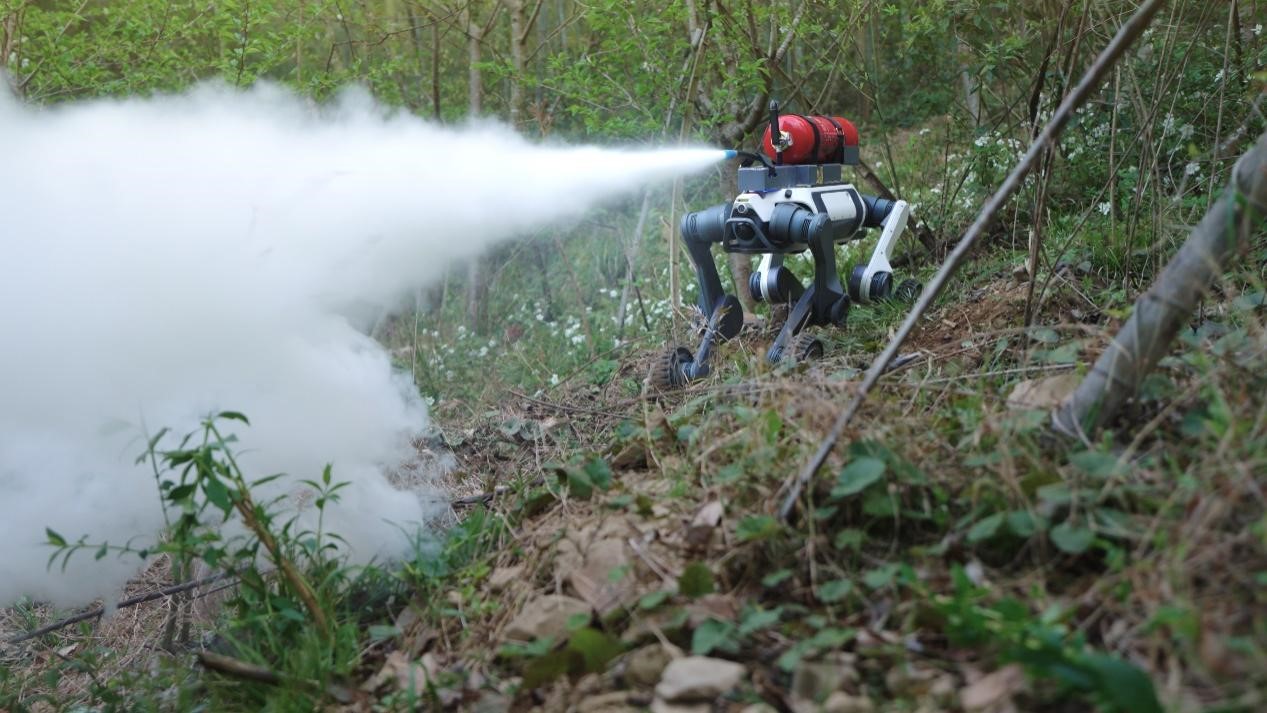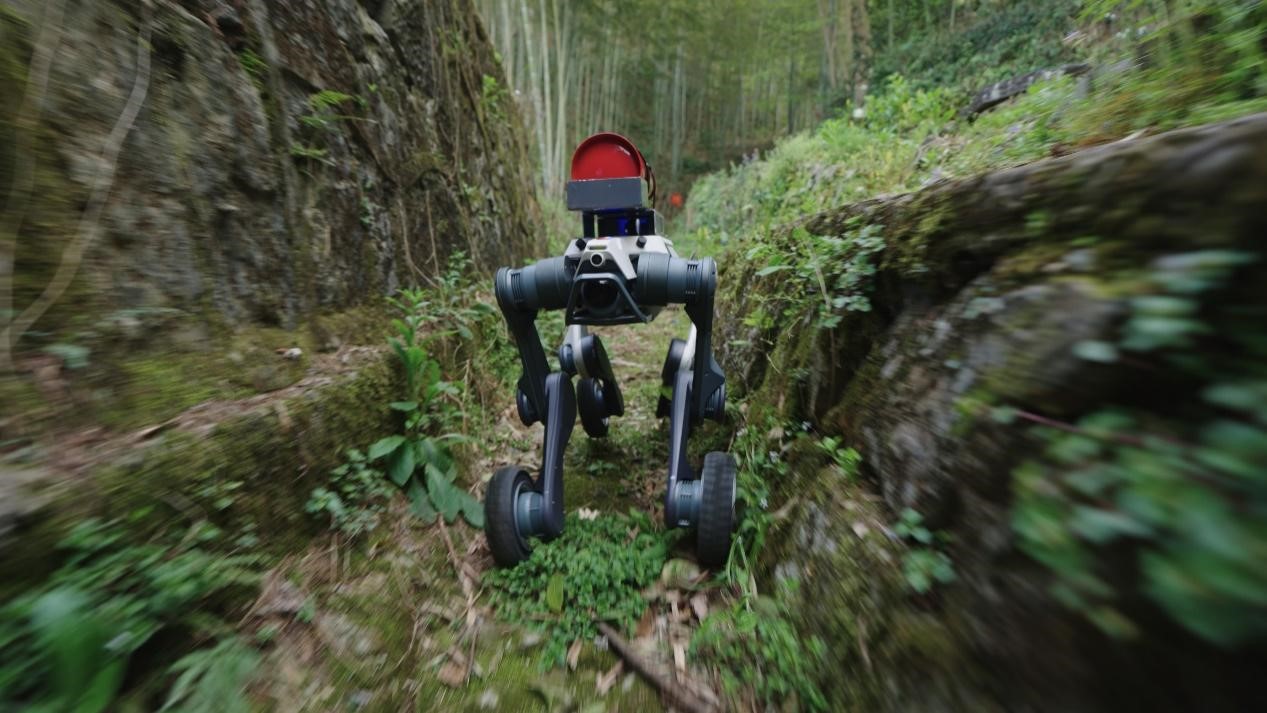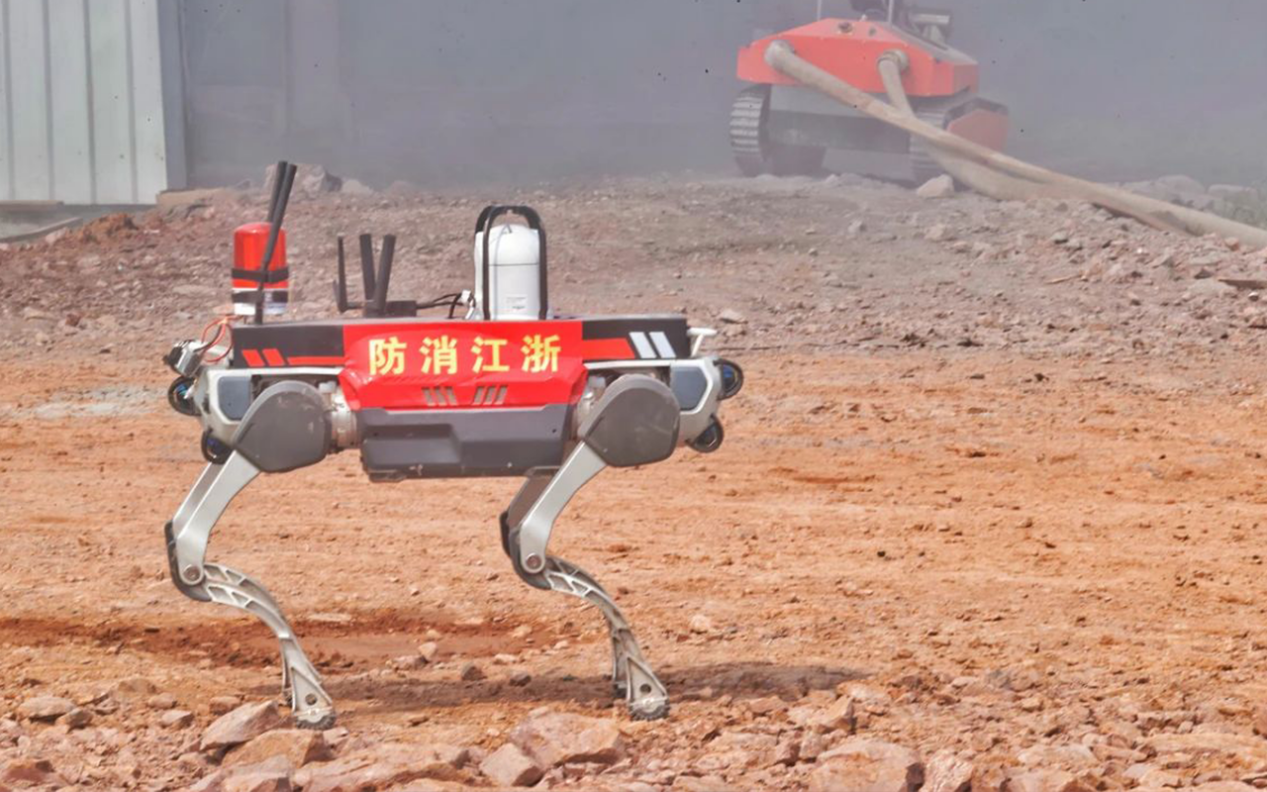HANGZHOU, CN / ACCESS Newswire / June 27, 2025 / With the rapid development of technology, unmanned intelligent emergency rescue equipment is gradually becoming the new favorite in the field of public safety. Such equipment can not only penetrate into dangerous environments, replace rescue personnel in performing high-risk tasks, and significantly improve rescue efficiency, but also safeguard the lives of rescue workers to a certain extent.
Driven by policies, ensuring the safety and reliability of emergency robots in complex and changeable environments, as well as achieving their efficient collaborative operations with other rescue equipment and personnel, have become urgent challenges in the development process of unmanned intelligent emergency rescue equipment.
Recently, LYNX M20 wheel-legged robot released by DEEP Robotics, with its innovative design and powerful performance, may bring a breakthrough solution to the existing dilemmas in emergency rescue, and promote the further upgrade of the practical combat capabilities of unmanned rescue equipment in real-world scenarios.

Upgrading Perception in Harsh Environments to Crack the Dilemma of Disaster Scene Reconnaissance
In a fire scene filled with toxic gases, firefighters rely solely on flashlights and protective gear for reconnaissance, with their detection range compressed to within tens of meters, and they also face fatal risks such as poisoning. This requires fire-fighting robots to possess the capabilities of complex environmental perception and operation in extreme environments.
LYNX M20 wheel-legged robot from DEEP Robotics is equipped with a 96-line LiDAR, which constructs a 360°×90° 3D perception network through hundreds of thousands of environmental data collections per second. Even in dark environments, it can real-time build a 3D point cloud model of the surrounding environment. Paired with gas sensors and a dual-light pan-tilt, it also enables functions such as real-time transmission of high-definition on-site images, precise detection and feedback of combustible/toxic gas data, heat source tracking, etc. This helps commanders achieve remote visual monitoring, predict potential dangers in advance, and provide intelligent support for search and rescue operations.

Meanwhile, LYNX M20 robot dog has an all-weather protection rating of IP66, which means it is completely dustproof and highly waterproof. It can operate continuously and stably in the extreme temperature range of -20°C to 55°C, and is fully capable of withstanding wind and rain.
All-Terrain Operation in Complex Terrains Helps Break Through Rescue Access Obstacles
In actual rescue scenarios, the dilemma of equipment passage caused by complex terrains is not uncommon. For example, in wild disaster accidents, traditional rescue equipment is limited by the narrowness and tortuosity of mountain roads and needs to take a detour. During urban rescues, the narrow space of stairwells inside buildings and the dense pipelines in underground utility tunnels cause rescue equipment to “get stuck”. At disaster sites such as earthquakes and collapses, obstacles like gravel and gullies in the ruins hinder rescue tasks due to complex terrain conditions.
As a medium-sized industrial-grade all-terrain wheel-legged robot specially designed for complex terrain and hazardous environment applications, LYNX M20 robot dog integrates the speed of wheeled robots with the flexibility of legged robots. It not only has the efficient mobility in wheeled mode but can also break through complex obstacles through its legged configuration. Compared with traditional tracked and wheeled robots in complex environment operations, it has obvious advantages in scenarios such as mountains, ruins, and narrow spaces.

With its compact size and “front elbow-rear knee” front-rear symmetrical mechanical structure, LYNX M20 robot dog can move freely even in old stairwells and underground utility tunnels as narrow as 50cm. This symmetrical design allows it to travel back and forth freely without turning around, and easily achieve flexible traversal by dynamically adjusting the wheel-leg spacing and joint angles. When facing an 80cm vertical obstacle, the anti-slip patterns on its four legs, combined with the “front elbow-rear knee” structure, provide strong grip and climbing stability; when dealing with 22cm continuous steps, it can precisely control the pace rhythm to complete the crossing, fully covering the dead corners that are difficult to reach by traditional rescue.
Accurate Information Collection Enhances Rescue Decision-making Efficiency
The real-time data acquisition at disaster sites directly affects rescue efficiency and safety. Traditional reconnaissance methods have problems such as incomplete data and time lag in complex environments, which are difficult to meet the decision-making needs of modern rescues.
Modern rescues place higher demands on equipment, requiring fire-fighting robots to have multi-dimensional environmental perception and stable data transmission capabilities to provide more accurate on-site information for command centers. In this regard, DEEP Robotics took the lead in launching the “Quadruped Robot Fire Emergency Solution” as early as 2022. Robot dogs and drones work together to build a sound air-ground collaborative rescue command system, which was verified in the “Emergency Mission · 2024” joint rescue drill for super typhoon prevention and extra-heavy flood disasters.

Last June, in the “Emergency Mission・2024” joint rescue drill for super typhoon prevention and extra-heavy flood disasters, the “Quadruped Robot Emergency Fire Solution” jointly deployed by Zhejiang Fire Brigade and DEEP Robotics demonstrated excellent combat capabilities. X30 robot and drones conducted coordinated operations, not only transmitting key data such as fire scene temperature, radiant heat intensity, and toxic/hazardous gas concentration in real time through dual-light pan-tilt and gas detectors, but also accurately locating the positions of trapped personnel in complex environments and quickly constructing a three-dimensional model of the disaster site. This provided precise decision-making basis for the command center, making rescue operations more scientific and efficient.
In addition, DEEP Robotics’ “Quadruped Robot Fire Emergency Solution” has completed scenario verification in various extreme environments, including earthquake ruins, collapse-prone buildings, tunnel accidents, and chemical pollution. The new-generation LYNX M20 wheel-legged robot, with its powerful functions and flexibility, will provide more intelligent support in the field of emergency fire protection, helping to make fire rescue more efficient and safer.
Conclusion: Rescue personnel face life-threatening risks such as toxic gas poisoning and building collapse during missions. Against this backdrop, the Ministry of Emergency Management is actively promoting the R&D and application of intelligent equipment, yet combat capabilities in complex environments remain an industry pain point.
From the perspective of technical verification, quadruped robot solutions represented by DEEP Robotics’ LYNX M20 have demonstrated significant advantages in the field of emergency fire protection, effectively improving rescue efficiency and operational safety. Innovative enterprises represented by DEEP Robotics, through continuous technological iteration and scenario verification, are promoting the comprehensive upgrading of the emergency rescue system and building an intelligent defense line for safeguarding people’s lives and property.
Company:DEEP Robotics
Contact:Vera Huang
Email 1:[email protected]
Email 2: [email protected]
Inquiry Form:https://www.deeprobotics.cn/en/index/buy.html
SOURCE: DEEP Robotics











